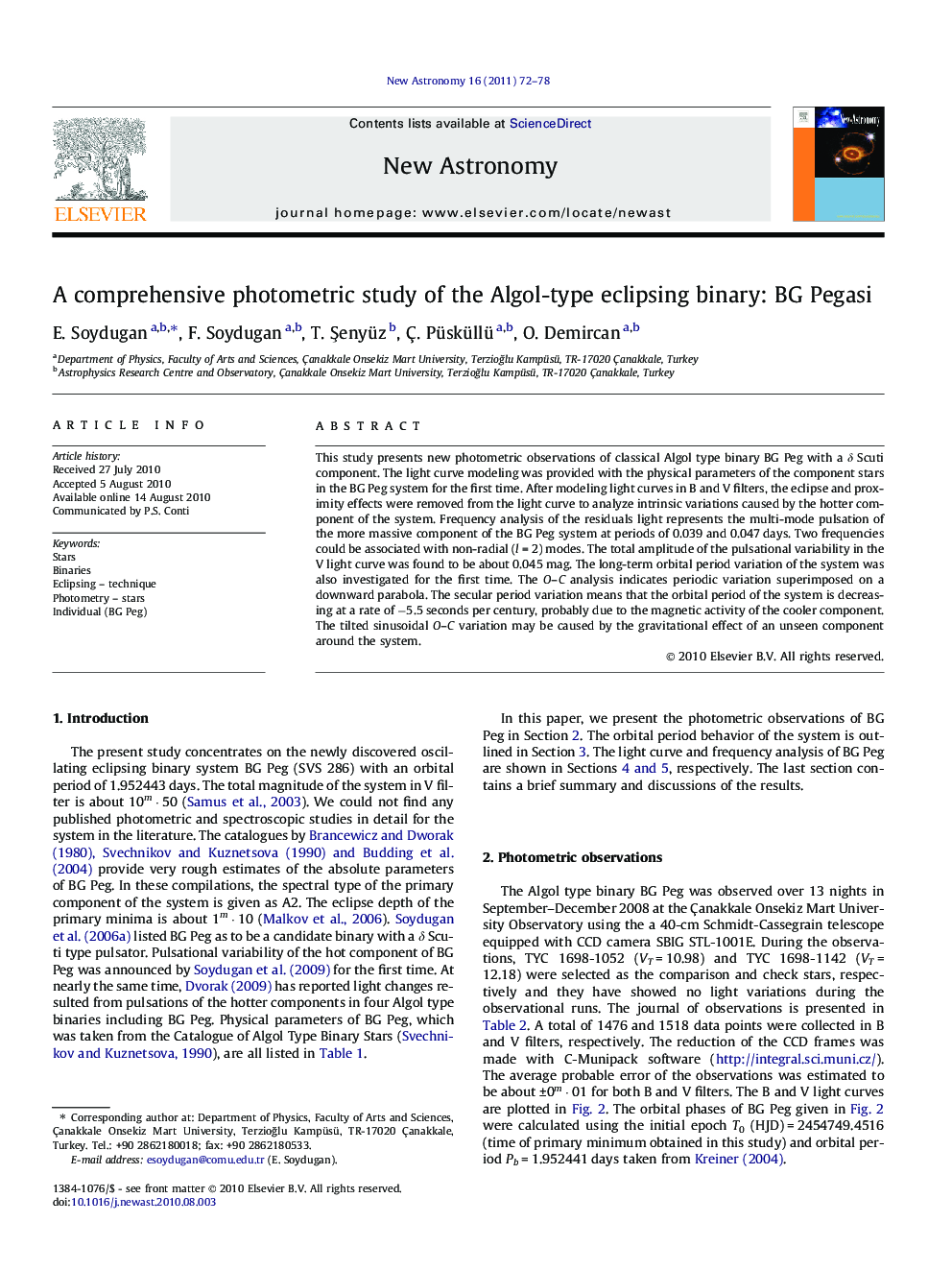| Article ID | Journal | Published Year | Pages | File Type |
|---|---|---|---|---|
| 1779426 | New Astronomy | 2011 | 7 Pages |
This study presents new photometric observations of classical Algol type binary BG Peg with a δ Scuti component. The light curve modeling was provided with the physical parameters of the component stars in the BG Peg system for the first time. After modeling light curves in B and V filters, the eclipse and proximity effects were removed from the light curve to analyze intrinsic variations caused by the hotter component of the system. Frequency analysis of the residuals light represents the multi-mode pulsation of the more massive component of the BG Peg system at periods of 0.039 and 0.047 days. Two frequencies could be associated with non-radial (l = 2) modes. The total amplitude of the pulsational variability in the V light curve was found to be about 0.045 mag. The long-term orbital period variation of the system was also investigated for the first time. The O–C analysis indicates periodic variation superimposed on a downward parabola. The secular period variation means that the orbital period of the system is decreasing at a rate of −5.5 seconds per century, probably due to the magnetic activity of the cooler component. The tilted sinusoidal O–C variation may be caused by the gravitational effect of an unseen component around the system.
